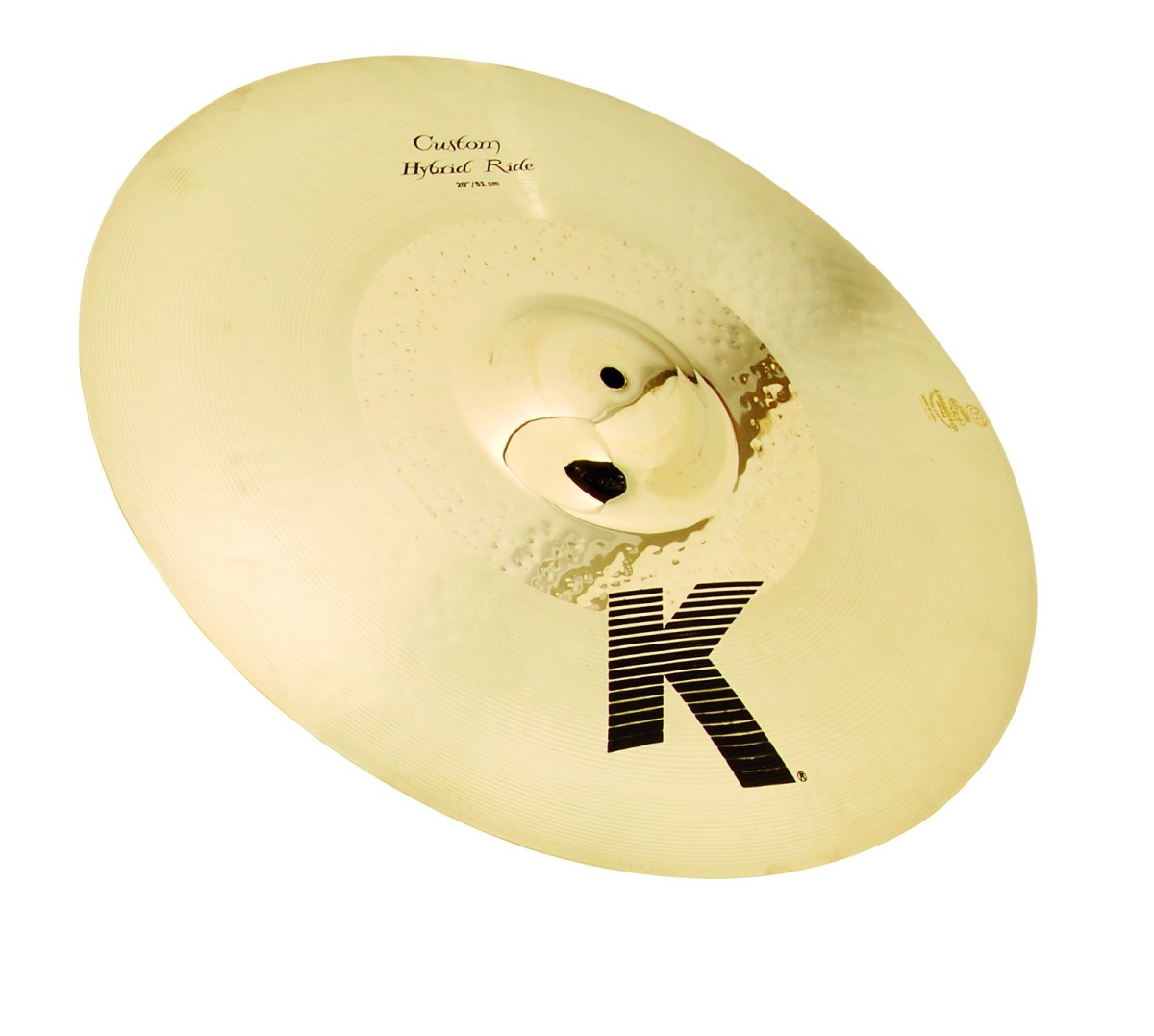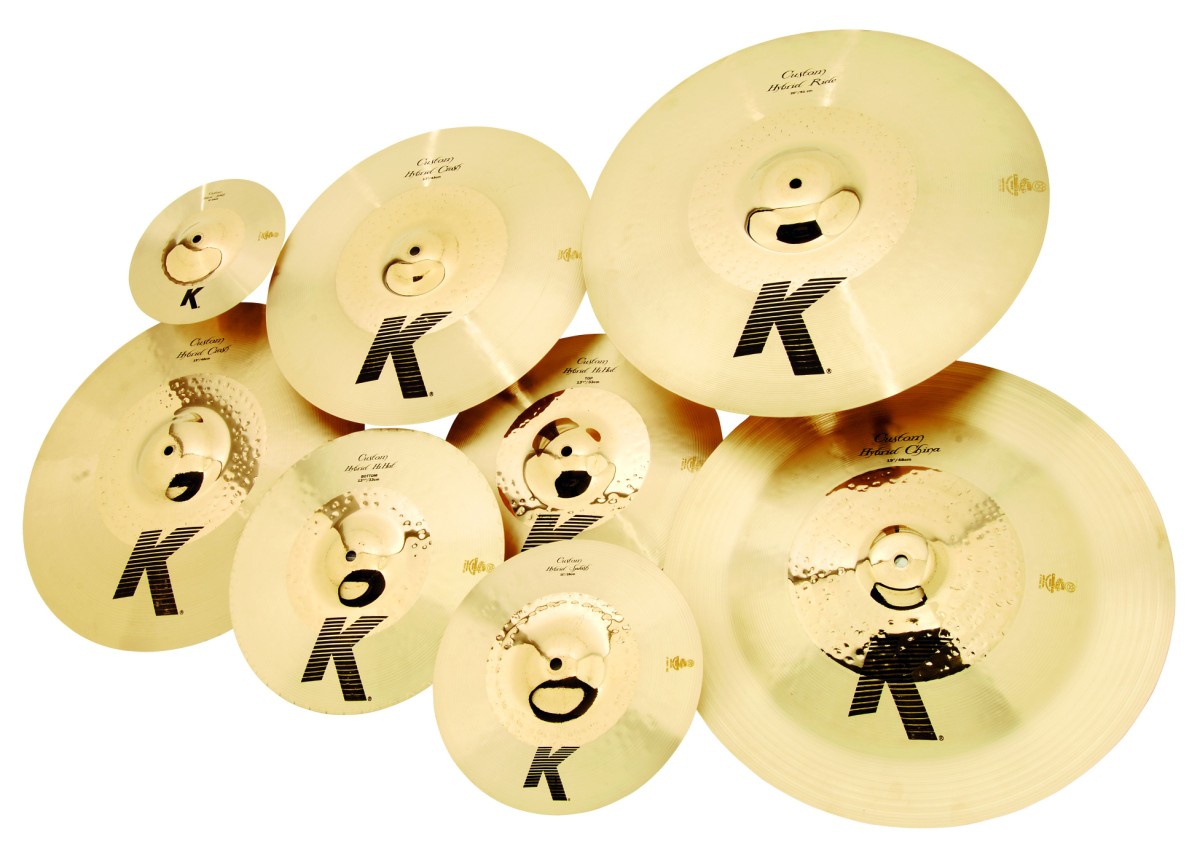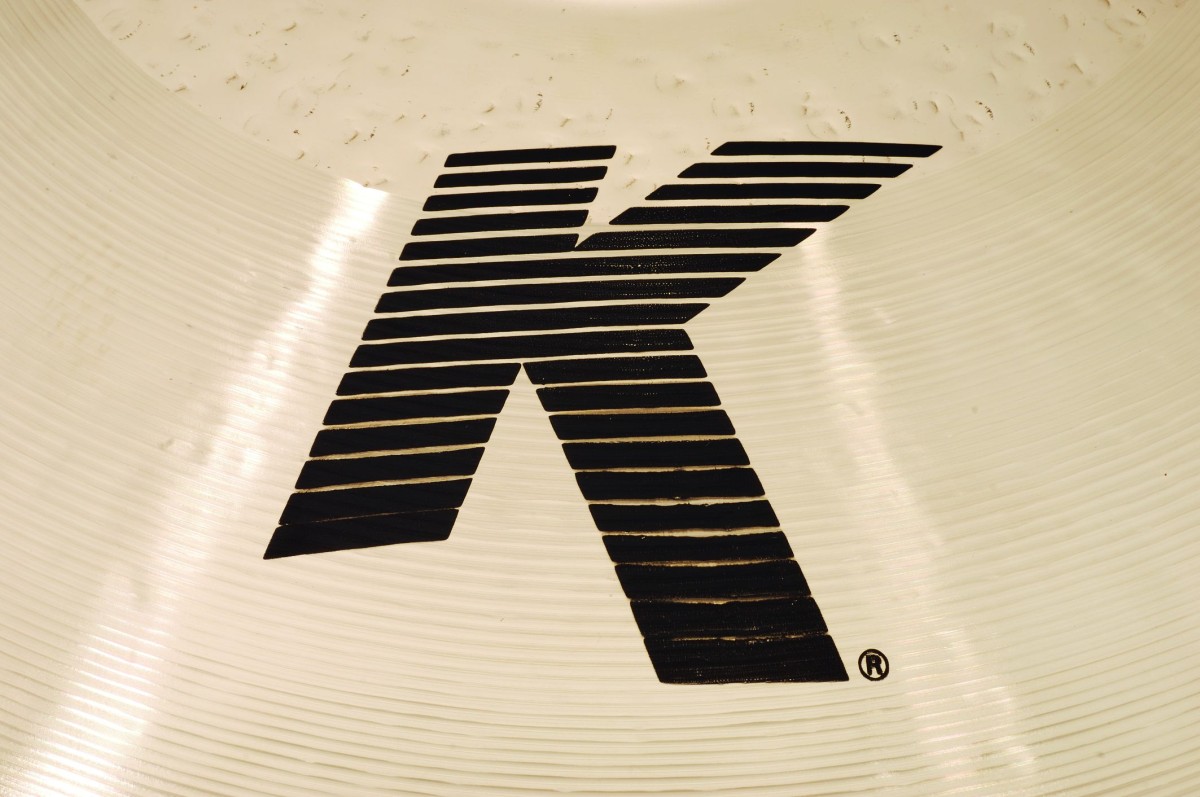MusicRadar Verdict
These are fine cymbals which reward a musical, inventive touch. But by doing several things well can they do one thing brilliantly? Other than the musical china and the killing, hissing hi hats, we have to say we preferred previous K Customs with their more singular designs.
Pros
- +
The dual Hybrid finishes make this a musical set of cymbals, capable of wide tonal variations.
Cons
- -
The Hybrid finish makes the cymbals extremely expensive, so be extra sure they are really what you want.
MusicRadar's got your back



This attractive looking set of K Customs is the result of a collaboration between Zildjian and celebrated Japanese drummer, Akira Jimbo. The unusual look is due to each cymbal having two distinct playing surfaces, hence the name Hybrid. The outer area has traditionally finished K-style lathing, while the inner area and bell has a smoothly polished brilliant finish.
The two bands meet half way across the radius of each cymbal. So, for example, on the 20" ride the demarcation line is at about 5". The cymbals are medium weight and have light hammering, though not on the bells. The effect the dual surface has is to offer two different sound dimensions depending on where and how the cymbal is played.
Dual ride
The 20" ride combines the defined stick response and strong bell sound of the K Custom ride (which has the brilliant, unlathed finish all over) with the crash-ability and increased spread of a thinner, lathed cymbal. The idea is that the lathed outer section produces a softer and darker sound while the inner smooth section and the bell produce harder and brighter tones.
Of course, this happens with any cymbal to some extent, since the note becomes shorter and higher-pitched as you approach the bell. But with this hybrid design the distinction is more pronounced. There is a definite change of timbre as you cross the line between the two surfaces.
While playing near the edge you can crash and ride in traditional K manner - you can whip up plenty of wash while retaining a clear stick response. Then immediately you cross the border into the central area you get a pingier, harder stick definition, well before you reach the bell. It's certainly different...
Both the 17" and 19" crashes have a full, warm and almost orchestral tone, but the first thing that struck us was the apparent difference between the two cymbals. Crashing the 17" produced a rather soft and warm sound, almost as if striking with a felt beater. But the 19" was toppier and more aggressive. We were at a loss to explain this until we noticed that the 17" has a rather small bell in proportion to its overall diameter, while the 19" has a large bell, similar in proportion to the ride's bell.
This brings home how shape and finish definitely alter the sound character of a cymbal. A bigger bell makes the cymbal louder and more strident, while, according to Zildjian, the unlathed section helps control the wash and sustain. So, crash either cymbal near the edge for a dark, warm and sustained whoosh, then smash either cymbal with the shoulder of the stick on the brilliant central surface to get a harder, shorter explosion.
In contrast to the big crashes, the two splashes have bells the same size, which means the bell on the 9" takes up significantly more of the cymbal's total area than on the 11". In fact, with the 9" there's the bell and the lathed, outer band with no room for the brilliant area in between.
The result? Well - surprise, surprise - the 9" sounds half bell and half splash. Catch the outer edge lightly and you're rewarded with a pleasantly soft splash. Strike it harder and the bell takes over - and as the bell is relatively large for the size of the cymbal, the overall volume is impressive for such a small splash.
The larger 11" splash has more of an orthodox splash sound, a nice balance of hissiness and ringing after-tone. The bell still takes up most of the brilliant finish section, with the result that you get a silvery attack and fairly abrupt decay.
Hybrid hats
Now we're getting really quirky. 13¼"? According to Akira, this gives him a bit more power than a 13" pair but more control than a 14". The most interesting thing about the hi-hats though is that they have 'Hybrid Hammering' around the outer edge of the bottom cymbal. This takes the form of small, half circle indentations pushed up from beneath the bottom cymbal.
Zildjian says this increases the area of contact, but in fact it reduces it, surely? Anyway, the effect is to counter the trapped air you get when two flat-edged discs clamp together - it sharpens up the pedalled 'chick' sound. More unusually, you get a fabulously sibilant 'tiss' when you just ease the pressure on the left foot and play the cymbals slightly open. It's almost as though there is a rivet in the top cymbal. Effective and unique.
The 19" china has a small squared bell and broad, upturned rim. Lots of chinas are hideously brash, like a dustbin lid explosion and little else, but this one has a wider, deeper, darker sound and a phenomenal amount of sustain when you play the edge. The dual surface again extends the ride possibilities.
The brilliant section is slightly smaller on this cymbal than on the others, but when you play here with your stick tip you get a high-pitched, brittle ping. Crash the cymbal anywhere on its surface and it is obviously attacking and strident, but the relatively deep and musical K Custom tone makes up for any harshness.
So is the dual surface a gimmick or a genuine boon? Akira Jimbo says he was aiming for maximum versatility and you can see what he means. The odd sizes and varied bells, as well as the dual surfaces, all point to much thought going into the finished designs.
MusicRadar is the number 1 website for music makers of all kinds, be they guitarists, drummers, keyboard players, djs or producers...
GEAR: We help musicians find the best gear with top-ranking gear round-ups and high- quality, authoritative reviews by a wide team of highly experienced experts.
TIPS: We also provide tuition, from bite-sized tips to advanced work-outs and guidance from recognised musicians and stars.
STARS: We talk to musicians and stars about their creative processes, and the nuts and bolts of their gear and technique. We give fans an insight into the actual craft of music making that no other music website can.
“Chinese Democracy was a boring record. But calling it Guns N' Roses was not honest. It was totally a solo record”: GN’R’s ex manager takes aim at Axl Rose
“Instead of labouring over a perfect recreation, we decided to make an expanded counterpart”: Chase Bliss teams up with Mike Piera for Analog Man collab based on the legendary King Of Tone
“It’s about delivering the most in-demand mods straight from the factory”: Fender hot-rods itself as the Player II Modified Series rolls out the upgrades – and it got IDLES to demo them










